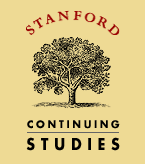Below are several resources I used in writing a speech delivered this morning for Early Risers Toastmasters entitled, “Feedback Loops in Personal Practices.” For those who were unable to attend, the talk focused on somatic learning and the importance of personal practices. (I am interested in personal practices as access to metaprogramming.) Feedback loops are important to mitigate the risk adopting destructive practices or of improperly performing the practice. I concluded with a tie-in reference to Theo’s new project of video recording the clubs speeches (if the speaker requests it).
When I promised this morning that I would publish the list, I didn’t think it would be such an ordeal. But when I stared at the bald list of book titles and author names, I knew it was lacking. The soup just needed a bit more seasoning.
Of course, any speech draws upon a lifetime of experiences. These are the books pulled from the bookcase and stacked upon my desk from which I double-checked material.
Adele Westbrook studied philosophy at Columbia University and has since made a career in advertising and publishing. She is currently an executive for a New York City publishing company.
Oscar Ratti received a degree in classical studies and law from the University of Naples, where we was an intercollegiate Greco-Roman wrestling champion, as well as a member of the championship judo team. Mr. Ratti is a commercial illustrator, and he serves as a design consultant for traditional and web-based publications.
Ms. Westbrook and Mr. Ratti have together taught aikido in New York, working with youth groups at centers affiliated with the YMCA.
KELLY: “I’ve read a number of Aikido books and found this to be the most enjoyable and the most pertinent to somatic learning. It wasn’t written for that purpose so you’ll have to work at ‘seeing the broader picture’. If you simply want a contextual basis for reading parts of Strozzi-Heckler’s ‘The Leadership Dojo’, I recommend speed reading the material. However, I invite you to participate in Aikido classes over an extended period, at least a year. My rationale is consistent with the following excerpt from the Institute of Transpersonal Psychology:”
ITP: “It may seem paradoxical to include martial arts practice as an important aspect to being a therapist. When we think of the martial arts, words such as, ‘opponent’, ‘defeat’, and ‘against’ often come to mind. However, Aikido differs from disciplines such as karate, tai chi, and even yoga because it emphasizes the importance of blending with your partner. In Aikido, as in therapy, it is necessary to read body language and understand the intention of the person with whom you are working. These are some of the fundamental reasons that ITP requires the study of Aikido for our Residential students.” [complete article]
Richard Strozzi Heckler, PhD is the founder and President of Strozzi Institute. A nationally known speaker and consultant on leadership and mastery, he has spent more than three decades researching, developing, and teaching the practical application of Somatics (the unity of language, action, and meaning) to business leaders and executive managers.
EXCERPT: “300 repetitions produce body memory, which is the ability to enact the correct movement, technique, or conversation by memory. It’s also been pointed out that 3,000 repititions creates embodiment, which is not having to think about doing the activity–it’s simply part of who we are.”
KELLY: “This was the book that pulled a lot of the other material together for me. It is not an academic study and I wouldn’t use it alone as an authoritative source. It does present a coherent description of somatic learning as practiced by the author in his training business. I suggest reading this material after having studied the other references mentioned in this list.”
Tracy Goss is President of Goss-Reid Associates, a management consulting firm based in Austin, Texas. She specializes in working with CEOs and their senior management teams, worldwide, to invent and strategically plan an “impossible future” and to “re-invent” themselves and their executive cadre to successfully lead their organization into that future.
EXCERPT: “Language is the only leverage for changing the context of the world around you. This is because people apprehend and construct reality through the way they speak and listen. Or, as Martin Heidegger put it, “Language is the house of being.”
KELLY: “This is the best publicly available source of Cylon (i.e., what drives us is a mechanical process controlled by our structures of interpretation) doctrine. It may not be as accessible to readers who have not participated in a Cylon-esque education program. The material becomes clearer through experience. If you only READ the material, that’s okay. You will benefit from even just a conceptual understanding before reading the other reference material. I include ‘The Last Word on Power’ because it shares many aspects with somatic learning while remaining, in many ways, incompatible with somatic learning. Puzzling out exactly where is educational.”
Malcolm Gladwell is a British-born Canadian journalist, author, and pop sociologist, based in New York City. He has been a staff writer for The New Yorker since 1996. He is best known as the author of the books The Tipping Point (2000), Blink (2005), and Outliers (2008).
KELLY: “I like Gladwell’s use of Paul Ekman’s work on facial expressions. While Gladwell isn’t an academic researcher, his treatment of facial expressions is both entertaining and easy to remember. I also like Gladwell’s treatment of John Gottman’s work on ‘thin slicing’. I integrated Ekman and Gottman’s work and juxtaposed that against Strozzi-Heckler’s material on somatic learning and what arose was in interesting postulate: ‘The mind makes its thoughts real for the body and the body/experience programs the mind.'”
James Robbins holds two graduate degrees, a Master’s degree in English literature from the University of Texas at Austin, and a master’s degree in professional counseling from Amberton University in Dallas. His first book of non-fiction, Build A Better Buddha, was published in 2003 by Nicolas-Hays, Inc. In 2004, Tony Robbins, world-renowned peak performance coach, personally selected this book as motivational reading for his elite, international group of Platinum Partnership clients. Better Buddha examines a cross-section of East and West, integrating aspects of Western psychology with Eastern philosophy.
KELLY: “I don’t even know where to begin. Most of what’s being said today has been said millennia ago. A good primer.”
Dr. K. Anders Ericsson is Conradi Eminent Scholar and Professor of Psychology at Florida State University who is widely recognized as one of the world’s leading theoretical and experimental researchers on expertise.
EXCERPT: “By now it will be clear that it takes time to become an expert. Our research shows that even the most gifted performers need a minimum of ten years (or 10,000 hours) of intense training before they win international competitions. In some fields the apprenticeship is longer: It now takes most elite musicians 15 to 25 years of steady practice, on average, before they succeed at the international level.”
KELLY: “The Ericsson ‘10,000 hours rule’ is often cited and often used out of context. The paper is easily accessible (i.e., not pedantic) and I believe it essential to judging whether another author’s reference of Ericsson’s work is legitimate.”
Paul Ekman is a psychologist who has been a pioneer in the study of emotions and their relation to facial expressions. He is considered one of the 100 most eminent psychologists of the twentieth century.[1] The background of Ekman’s research analyzes the development of human traits and states over time. He retired in 2004 as professor of psychology in the Department of Psychiatry at the University of California, San Francisco (UCSF).
John Gottman, Ph.D. is known for his work on marital stability and relationship analysis through scientific direct observations published in peer-reviewed literature. Dr. Gottman found his methodology predicts with 90% accuracy which newlywed couples will remain married and which will divorce four to six years later. It is also 81% percent accurate in predicting which marriages will survive after seven to nine years. Dr. Gottman is a Professor Emeritus of psychology at the University of Washington, and with his wife Dr. Julie Gottman now heads a non-profit research institute.
Albert Mehrabian (born 1939, currently Professor Emeritus of Psychology, UCLA), has become known best by his publications on the relative importance of verbal and nonverbal messages. His findings on inconsistent messages of feelings and attitudes have been quoted throughout human communication seminars worldwide, and have also become known as the 7%-38%-55% Rule.
KELLY: “I recommend at least reading through the summary material on wikipedia as Mehrabian’s results are often misconstrued. As noted, ‘It is emphatically not the case that non-verbal elements in all senses convey the bulk of the message, though this is how his conclusions are frequently quoted.’ Nonetheless, Mehrabian’s work is adds to understanding somatic learning, in my opinion, in that voice and body are an integral element in projecting one’s message successfully or unsuccessfully; it’s not enough to focus strictly on language acts.”


